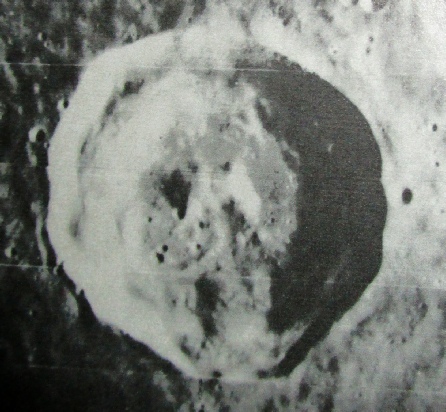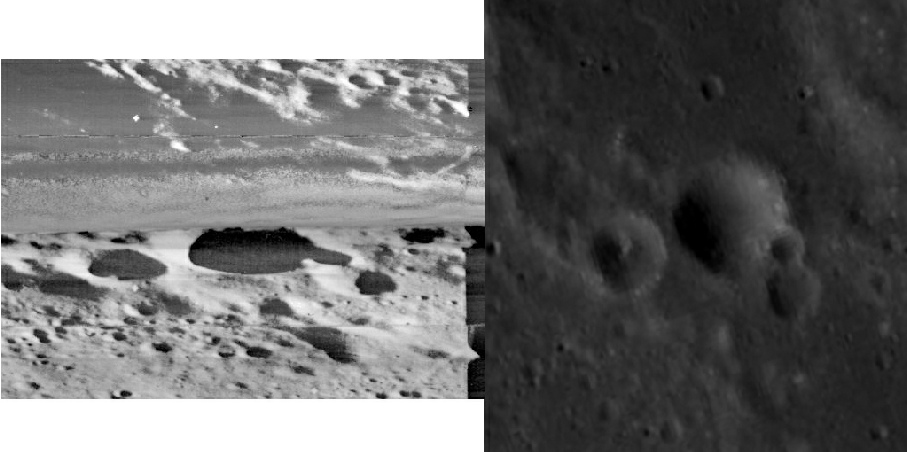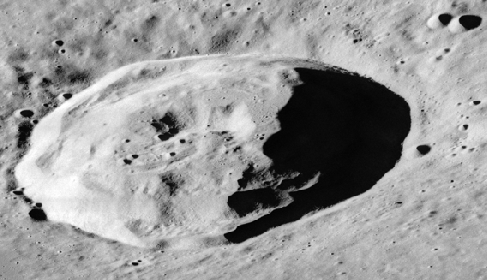
There are several UFO sites and youtube videos that make a number of claims about this image, taken by Lunar Orbiter 3 in 1967.
The image shows Rima Hyginus in the foreground, and in the background is Manilius crater. This crater is roughly on the lunar equator, and almost smack dab in the middle of the moon as we see it. Even a modest telescope will furnish a good view of it.
We can summarise the claims as follows:
1. NASA has been hiding this image
2. There is a 100km road running across the image.
3. There is a UFO in the bottom of Manilus crater.
As we will see, all of these claims are utter bollocks.
Firstly, you can get hold of that image pretty easily on the internet once you know which Orbiter took it and which number it is. Here it is ‘hiding’ in the Apollo Image Atlas website:
The section of the image containing Hyginus has been reproduced in many books dating from the 1960s and 1970s, such as this 1970 one from my own collection (The Moon as Viewed from Lunar Orbiter):
What about the second claim? Well, apart from the fact that a 100 km road would be easily visible from the Earth, the straight line feature is nothing of the sort. Lunar Orbiter probes took their photographs on film, and the resulting images were developed while in lunar orbit before being scanned in sections. Those scans were then transmitted back to Earth. It’s much more likely that the line we saw that is being described as a road is either a problem during the development process or a glitch in the scanning -
There are also areas that suggest problems in data transmission, such as this one, compared with the LRO scene at the same area:
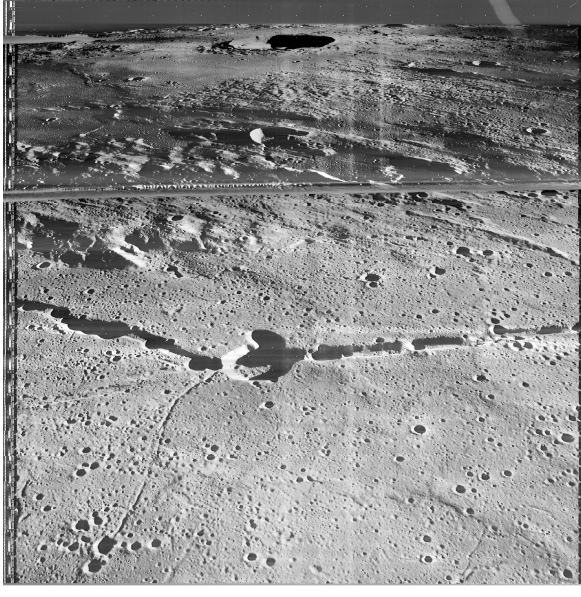
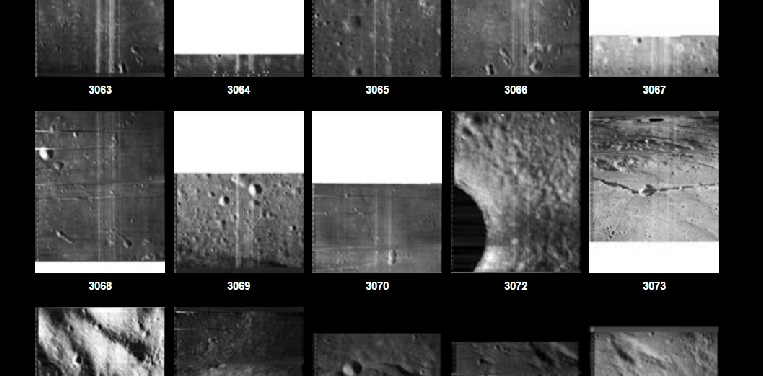
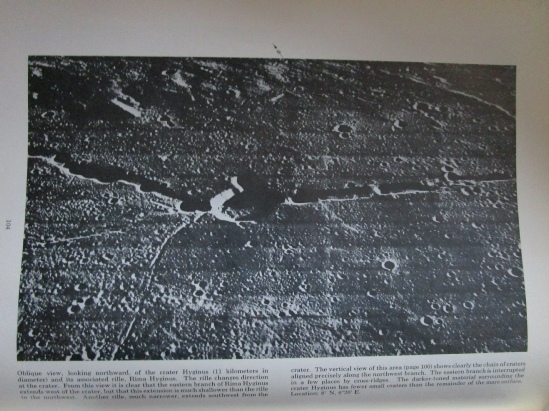
Either way, it is clearly not a road. We can demonstrate that it would have been visible from Earth by looking at images taken by powerful telescopes and published in lunar atlases in the 1960s. Here’s one, for example, from Dinsmore Alter’s 1964 Lunar Atlas, which is part of an image taken by an Earthbound telescope (below left) and the 1971 New Photographic Atlas of the Moon (below right), again from a telescope:

Both are from my own copies.
How about if we look at the one taken by the 4th Lunar Orbiter, just a year after Orbiter 3 one. The version below left is from my own copy of the Lunar Orbiter Photographic Atlas of the Moon, just to prove it’s genuine, while below right is a modern copy.
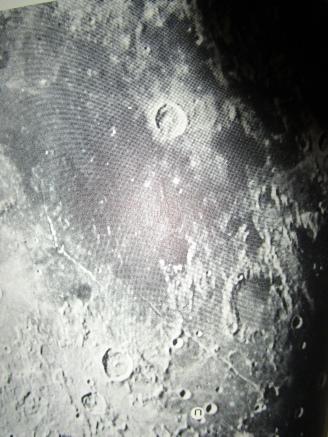
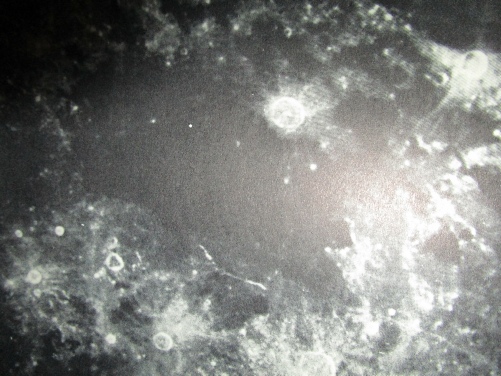
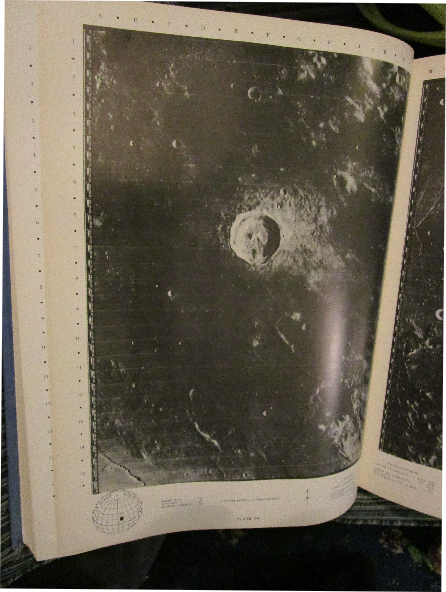
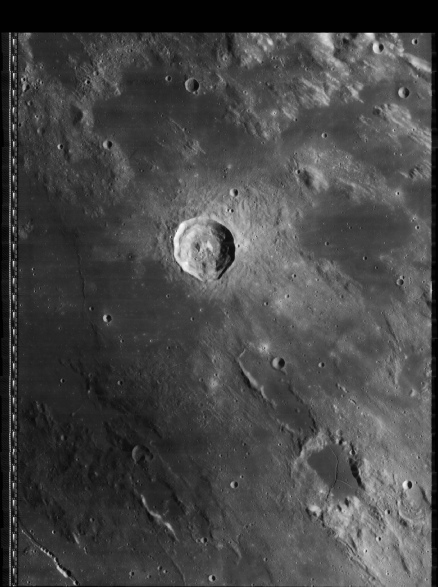
So, there we have three separate sources, two from Earth, one from lunar orbit, that completely makes a nonsense of the claim that there is, or was, some sort of mile wide superhighway across the most visible part of the lunar surface.
So, what about the claim that there is a giant UFO stationed in an extremely visible crater? Luckily, we have several sources, both contemporary and modern, that will help us prove it as nonsense. Firstly, let’s have a zoom into that Orbiter 4 photograph (below left). We’ll even be helpful and stick to the paper copy. Below right is the same crater as photographed by Apollo 17, and again this is from my own hard copy of the Apollo 17 Preliminary Science Report (the full version of that photo also shows that there is no road!).
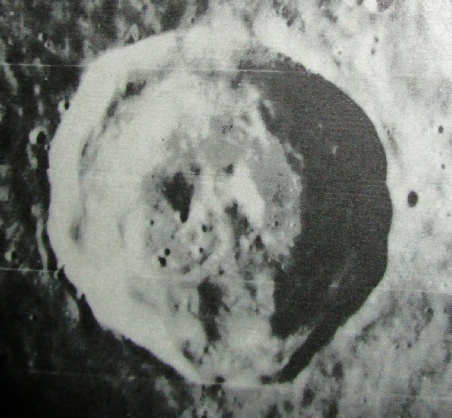
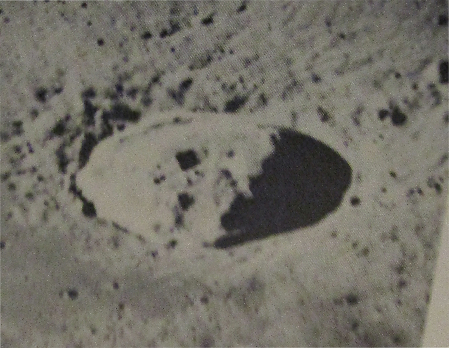
So far so good, but what if the spaceship just flew off as soon as it was photographed? Well, let’s look at some details in the crater to see if we can tell. Here’s the crater zoomed in close.

The alleged UFO is the large, flat and seemingly featureless area lit by the sun inside the crater. This image doesn’t help us much because it is very oblique, and all of the images we have are more or less vertical. Let’s fix that.
The vertical walls are greatly exaggerated, but it does allow us to compare with high resolution modern images, namely one taken by India’s Chandrayaan probe (below left) and the LRO (below right)
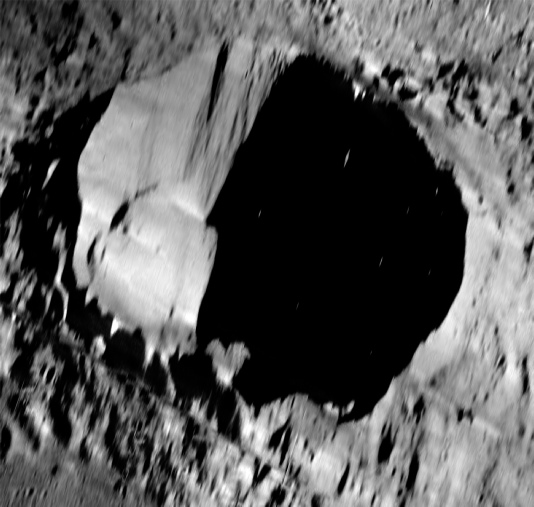
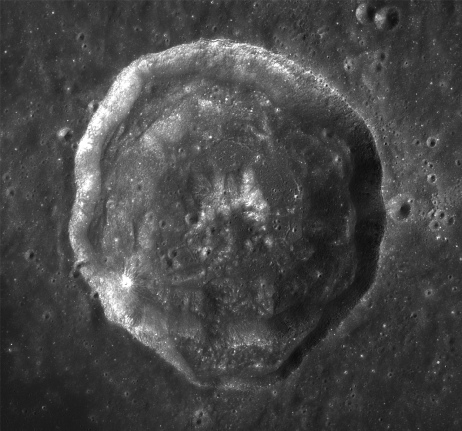
The first thing we need to agree on is that we are looking at the same crater. LRO and Chandrayaan are obviously the same one, and if you look up the page you’ll see that they also match the Orbiter 4 vertical view.
In the top left corner of the two modern images there is a pair of craters aligned west-
The crater at 3 o’clock is also just visible, again distorted by perspective, and a couple of the smaller craters running north-
In other words, it’s the same crater. Let’s now focus in on the visible portion of the crater floor and what is visible there.
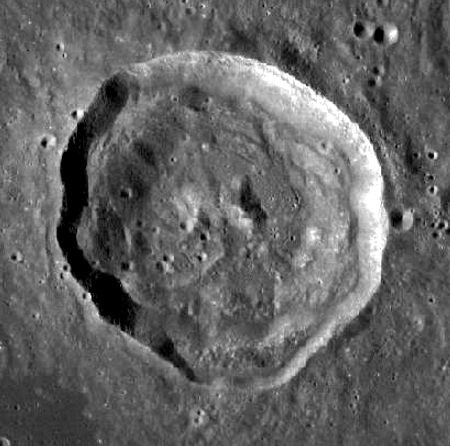
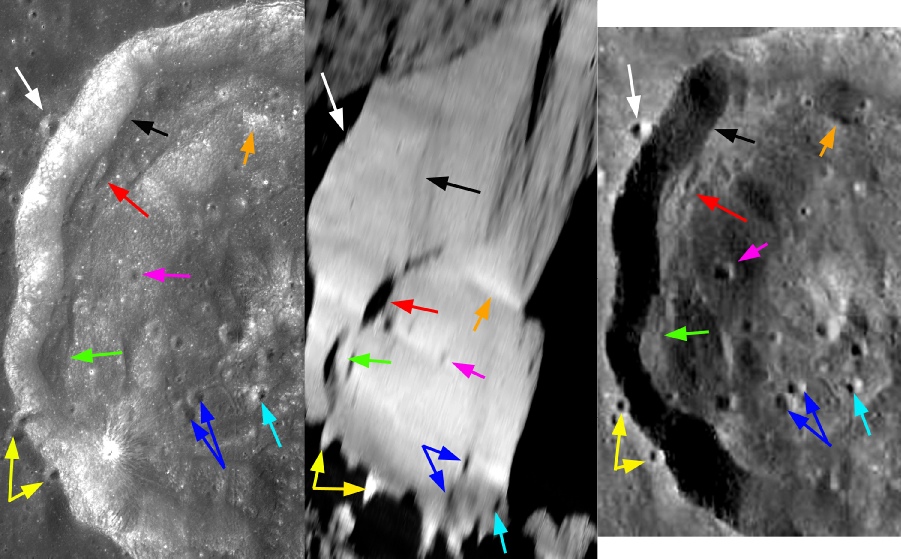
I’m sure some will disagree with this interpretation, but as far as I am concerned the details in the crater are a match. Any discrepancy in exact locations can be explained by the stretching done to match the view. The small crater north-
There is definitely and absolutely no spaceship, and I’ll leave you with high resolution modern scans of Orbiter 4 and Apollo 17 images used above to prove it.
